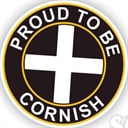Compiled in the 14th century, 'The Forme of Cury' is a book about what?
The Forme of Cury (The Method of Cooking, cury being from Middle French cuire: to cook) is an extensive collection of medieval English recipes from the 14th century. Originally in the form of a scroll, its authors are listed as "the chief Master Cooks of King Richard II".
It is among the oldest English cookery books, and the first to mention olive oil, gourds, and spices such as mace and cloves.
The scroll was written in late Middle English (c. 1390) on vellum and contains about 200 recipes (although the exact number of recipes varies slightly between different versions) with many of the same recipes as Ancient Cookery (Latin: Diuersa seruicia). The Forme of Cury may have been written partly to compete with Le Viandier of Taillevent, a French cookbook created around the same time. This supports the idea that banquets were a symbol of power and prestige for medieval lords and kings.
The name The Forme of Cury was given to the manuscript by Samuel Pegge, who published an edition of it in 1780 for the curator of the British Museum, Gustavus Brander. This name has since come into usage for almost all versions of the original manuscript even though they differ from each other. It is one of the best-known medieval guides to cooking.
More Info:
en.wikipedia.org
